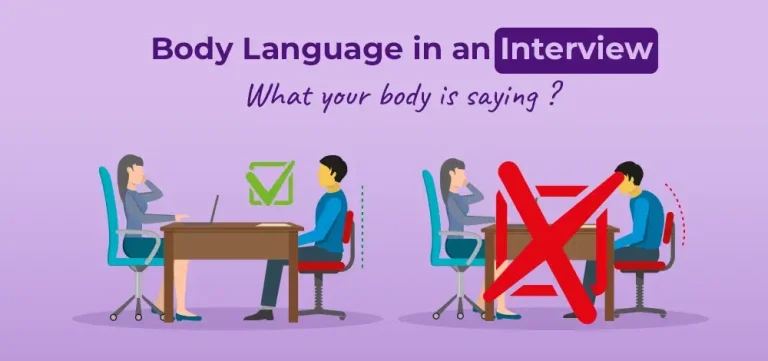Touching Head Body Language
Welcome aboard, young reader! Have you ever wondered what your body language says about you? Well, let’s dive into one interesting aspect: the fascinating world of “touching head body language.”
Did you know that the way you touch your head can give away a lot about your thoughts and emotions? It’s like a secret code that only a few know about. So, stick around as we unravel the mysteries behind this intriguing form of nonverbal communication.
Whether it’s running your fingers through your hair or rubbing your temples, each gesture tells a unique story, and we’re here to decode it. Let’s explore the hidden messages behind touching our heads and discover what it says about our feelings and intentions. Intrigued? Let’s get started!

The Power of Touching the Head: Understanding Body Language
Body language is a fascinating aspect of human communication that often goes unnoticed. The way we move, gesture, and position our bodies can convey powerful messages to those around us. One particular gesture that holds significant meaning is touching the head. In this article, we will explore the intricacies of touching the head as a form of body language and delve into the various messages it can convey. Whether you are observing others or reflecting on your own habits, understanding head-touching gestures can help you navigate social interactions more effectively.
Why Do We Touch Our Heads? The Psychology Behind the Gesture
Head-touching can be a reflexive action that we engage in without conscious awareness or a deliberate gesture we use to convey a specific message. The psychology behind head-touching is multifaceted and can vary depending on the individual and context. Here are some common reasons why people touch their heads:
- Self-Soothing: When feeling stressed, anxious, or uncertain, touching the head can provide comfort and reassurance. It is a way of self-soothing, akin to the action of a child comforting themselves by holding their own head.
- Contemplation: Touching the head, particularly the temples or forehead, is often associated with deep thought and contemplation. It is a physical manifestation of the cognitive processes happening within.
- Indecision: When faced with a difficult decision, people may touch their heads as a subconscious way of signaling their internal conflict. It is a visual cue that suggests the person is weighing their options.
Understanding the psychology behind why people touch their heads can provide valuable insights into their emotional state, thoughts, and intentions.
The Different Messages of Head-Touching Body Language
Head-touching gestures can communicate a wide range of messages, depending on the specific context and accompanying cues. Here are some key messages that head-touching body language can convey:
Confusion or Lack of Understanding
When someone touches their head while listening to or processing information, it could indicate confusion or a lack of understanding. This gesture often accompanies a furrowed brow or a puzzled expression.
For example, during a meeting or discussion, if someone frequently touches their head while another person is presenting complex ideas, it could be a sign that they need further clarification or struggle to grasp the concepts being presented.
Anxiety or Nervousness
Head-touching can also be a telltale sign of anxiety or nervousness. People may unconsciously touch or rub their temples or the back of their head when they are feeling stressed, worried, or uncomfortable in a particular situation.
For instance, imagine someone attending a job interview. If they repeatedly touch their head or run their fingers through their hair, it might indicate that they are feeling anxious about the outcome or are trying to calm their nerves.
Skepticism or Critical Thinking
When someone touches their chin or rests their hand on their head while listening or observing, it can signal skepticism or critical thinking. This gesture often accompanies a thoughtful expression as the person contemplates the information presented.
For instance, a teacher might touch their chin while listening to a student’s explanation to indicate that they are carefully evaluating the response or considering alternative perspectives.
By paying attention to the accompanying cues and context, you can better interpret the intended message behind head-touching body language.
Capriciousness or Playfulness
Not all head-touching gestures convey serious or solemn messages. In some instances, head-touching can be a lighthearted or playful action that adds a touch of whimsy to social interactions.
Imagine a group of friends engaging in a friendly debate. One may playfully touch their head and raise an eyebrow to signal that they are being mischievous or teasing.
It is important to take into account the overall tone, relationship dynamics, and non-verbal cues to accurately interpret the playful nature of head-touching gestures.
Tips for Understanding and Utilizing Head-Touching Body Language
Understanding head-touching body language can enhance your communication skills and improve your ability to interpret the messages of others. Here are some tips to keep in mind:
Observe Patterns and Individual Differences
While some head-touching gestures may have universal meanings, it is essential to recognize that individuals may have unique habits or interpretations. Pay attention to patterns and consistent behaviors exhibited by a person rather than relying solely on predefined meanings.
Consider the Context
Context plays a crucial role in interpreting body language. A head-touching gesture can have different meanings depending on the setting, relationship, and accompanying cues. Consider the broader context to decipher the intended message accurately.
Look for Clustered Body Language Cues
Body language is most informative when multiple cues align to convey a consistent message. Look for other non-verbal cues, such as facial expressions, eye contact, and posture, to gain a more comprehensive understanding of the individual’s thoughts and emotions.
Practice Active Listening
Active listening involves not just hearing the words spoken but also paying attention to non-verbal cues. By actively listening and observing head-touching gestures, you can pick up on subtle nuances and ensure better communication.
By developing your understanding of head-touching body language, you can sharpen your social skills and improve your ability to connect with others on a deeper level.
Body Language Tips for Different Scenarios
Now that we have explored the nuances of head-touching body language, let’s delve into some additional tips for different scenarios:
1. Body Language in a Professional Setting
When in a professional setting, be mindful of your head-touching gestures. Excessive head-touching can be interpreted as anxiety or lack of confidence. Maintain a professional demeanor by keeping head-touching to a minimum and focusing on maintaining a calm and composed body language.
2. Body Language in Social Interactions
During social interactions, head-touching can communicate warmth, interest, and engagement. Touching the head can show that you are attentive and actively listening to the other person. However, be mindful of overdoing it, as excessive head-touching can become distracting or give the impression of nervousness.
3. Body Language in Romantic Relationships
In romantic relationships, head-touching can enhance intimacy and affection. Gently touching your partner’s head or receiving head-touching gestures can communicate love, comfort, and a deep connection. Be attuned to your partner’s preferences and boundaries to ensure that head-touching is welcomed and reciprocated.
Overall, mastering the subtle language of head-touching can greatly enhance your communication skills and deepen your understanding of others. Remember, body language is only one piece of the puzzle, and it should be considered alongside verbal communication and other contextual cues to gain a holistic understanding of human interaction.
Unlock the power of body language by paying attention to the messages conveyed through head-touching gestures, and you will open up a world of subtle communication and connection.
Key Takeaways: Touching Head Body Language
- Touching the head can indicate confusion or deep thought.
- Rubbing the forehead can signal stress or frustration.
- Scratching the head may indicate uncertainty or doubt.
- Cupping the head with hands can suggest being overwhelmed or overwhelmed.
- Repeatedly touching the head can be a sign of discomfort or nervousness.
Frequently Asked Questions
Body language plays a significant role in understanding human emotions and intentions. One aspect of body language is when someone touches their head. Here are some frequently asked questions about touching the head as a form of body language.
1. Why do people touch their head during conversations?
People may touch their head during conversations for various reasons. It can be a sign of nervousness or anxiety, as they may be subconsciously trying to soothe themselves. It could also indicate deep thought or contemplation, as touching the head can help individuals concentrate. Additionally, touching the head might be a response to scalp irritation or discomfort.
However, it’s essential to observe other non-verbal cues and consider the context. In some cases, touching the head can indicate dishonesty or a desire to hide something. Overall, interpreting head-touching body language requires considering the person’s overall behavior and verbal communication.
2. Is touching the head a sign of dishonesty?
While touching the head can sometimes indicate dishonesty, it’s important to approach this interpretation with caution. It’s just one potential indicator among many, and it should be considered alongside other body language cues and verbal communication. Some people might genuinely touch their head due to discomfort, absentmindedness, or as a personal gesture unrelated to deceit.
When assessing head-touching as a potential sign of dishonesty, look for patterns and clusters of other suspicious behaviors. Pay attention to changes in eye contact, inconsistent statements, or unusual body movements. Additionally, consider the context and individual differences in body language cues. It’s best to approach any assessment of honesty or deceit with a holistic understanding of the person’s overall behavior and communication.
3. Can touching the head indicate confidence?
While touching the head is commonly associated with anxiety or nervousness, it can also indicate confidence in certain contexts. For example, if someone confidently rubs their temples while making a decision or discussing an idea, it might signify their conviction and assurance in their thoughts. Similarly, someone lightly tapping their forehead while explaining a concept may demonstrate their self-assuredness and knowledge.
However, interpreting head-touching body language requires careful observation of the individual’s overall behavior and verbal communication. Confidence can manifest in various ways, and it’s essential to consider other non-verbal cues and the context in which the head-touching occurs. Overall, head-touching should be observed in conjunction with other body language cues to accurately interpret the person’s confidence level.
4. What are some cultural differences in head-touching body language?
Body language, including head-touching, can vary across cultures. In some cultures, touching the head may be seen as disrespectful or invading personal space. For instance, in many Asian cultures, touching someone’s head is typically considered impolite or reserved for close family or friends. In other cultures, such as Italy, it may be more acceptable to touch someone’s head during casual conversation or to express affection.
It’s crucial to consider cultural differences when interpreting head-touching body language. What might indicate a specific emotion or intention in one culture could have a different meaning in another. It’s always best to approach body language interpretation with an open mind and cultural sensitivity, taking into account the norms and customs of the specific cultural context.
5. How can I improve my understanding of head-touching body language?
To improve your understanding of head-touching body language, start by observing people’s behavior and noting patterns. Pay attention to how individuals touch their head in different situations and consider the accompanying non-verbal cues and verbal communication. Familiarize yourself with cultural differences in head-touching customs to avoid misinterpretations.
Additionally, reading books or articles about body language can provide valuable insights into various gestures and their meanings. You can also watch videos or attend workshops on non-verbal communication. Finally, remember that body language is not an exact science, and it’s essential to interpret it within the specific context and in conjunction with other cues. Practice observing and analyzing body language regularly, and over time, you’ll develop a better understanding of head-touching and other non-verbal behaviors.
How To Read Body Language | Hands Clapsed Behind The Head Leaning Back 🐍
Summary
When someone touches their head while talking to you, it could mean different things. If they touch their forehead, it might mean they are confused or trying to think. If they touch the back of their head, it could mean they are bored or frustrated. Pay attention to these signals to understand how the person is feeling.
Remember, body language can reveal a lot about a person’s emotions and thoughts. By paying attention to subtle cues like head touching, we can gain insight into what someone might be thinking or feeling. So, the next time you see someone touching their head, take a moment to consider what it could mean.


